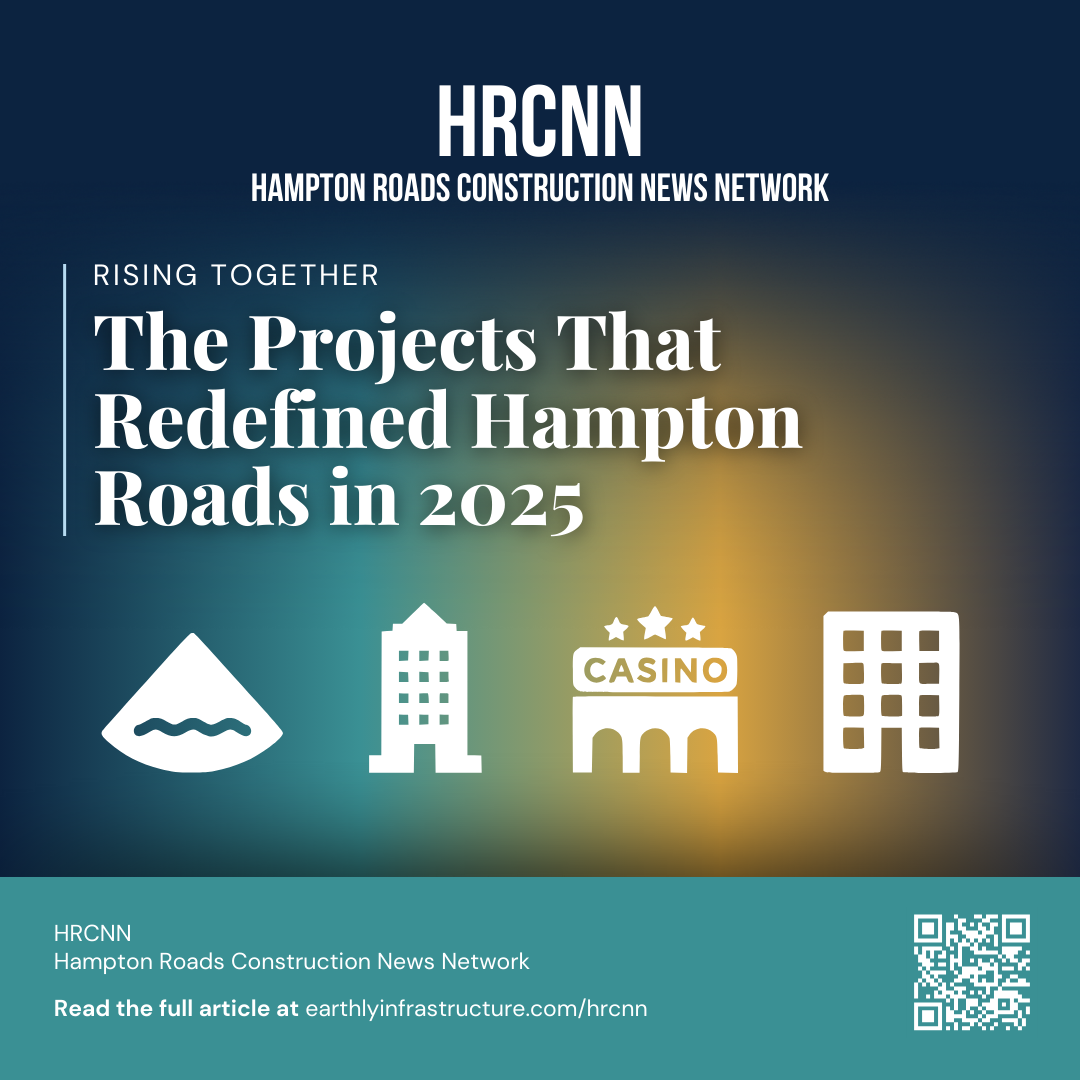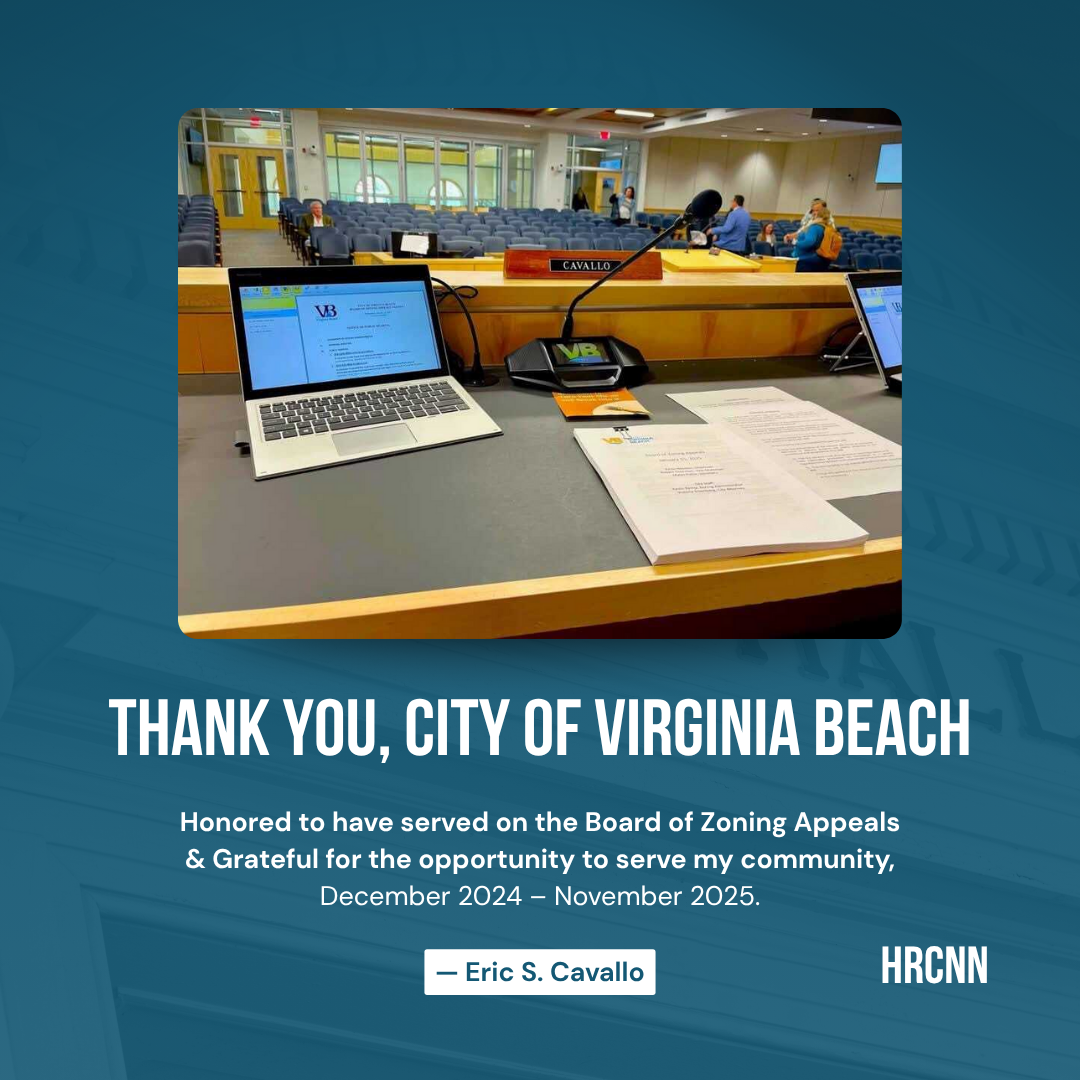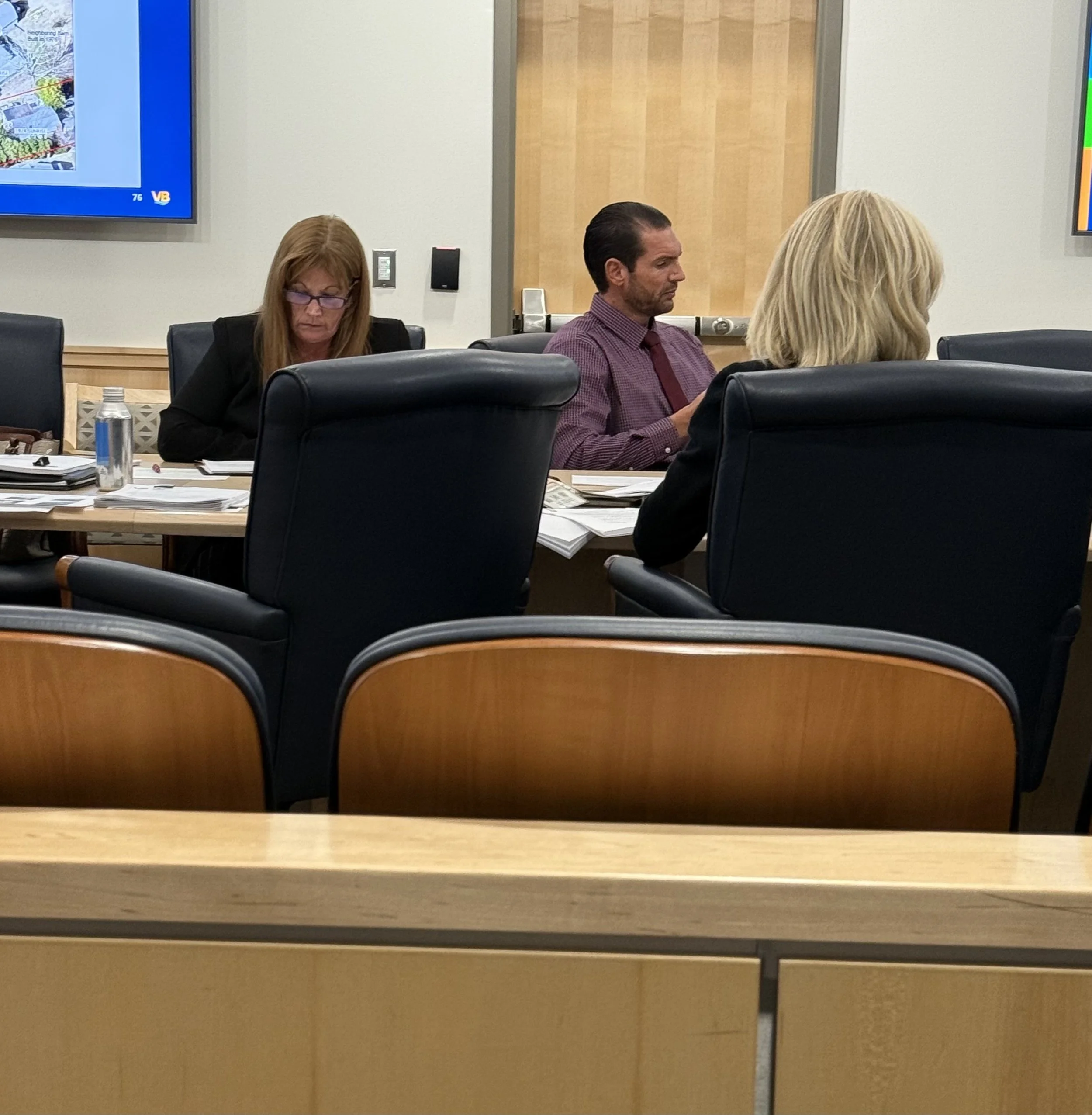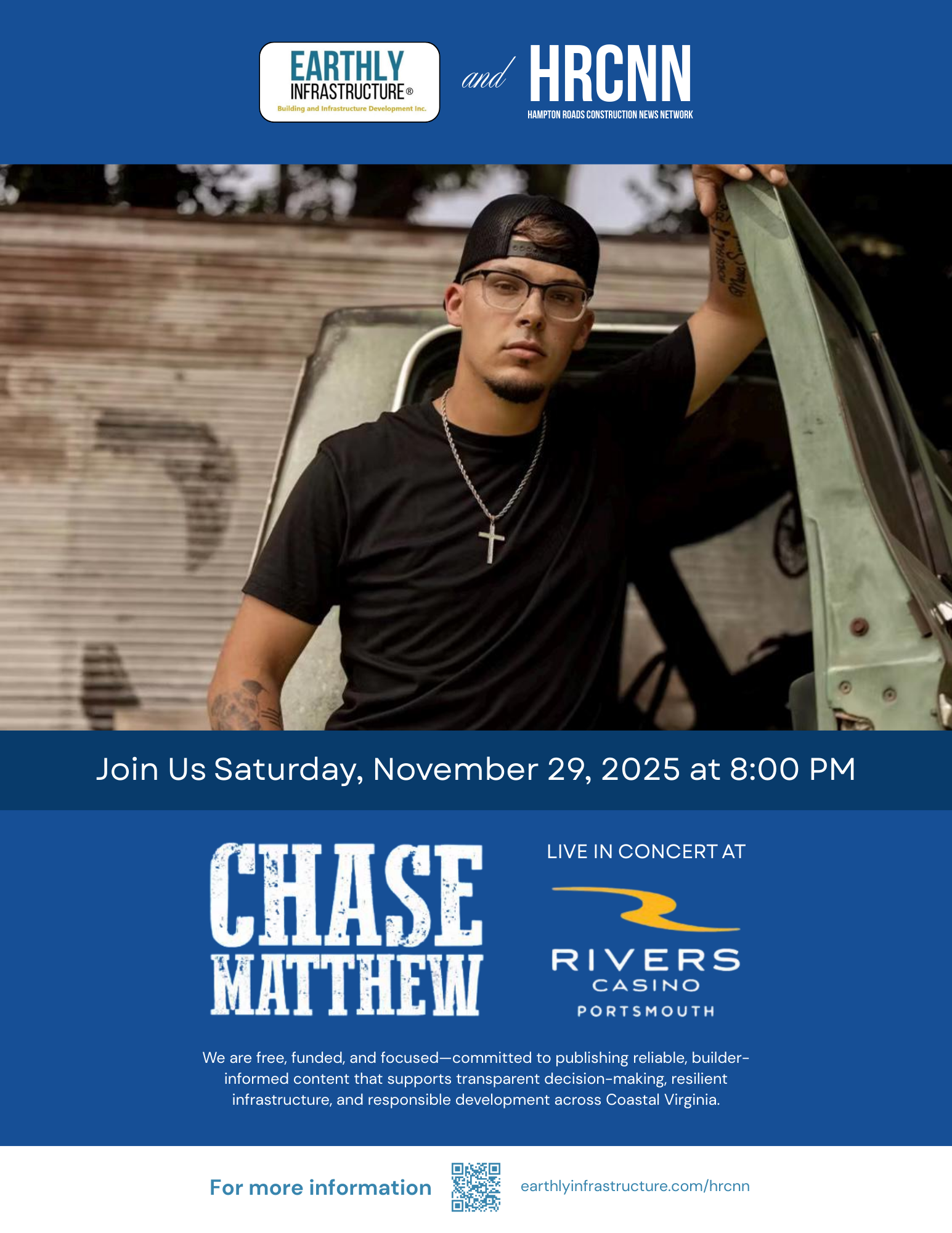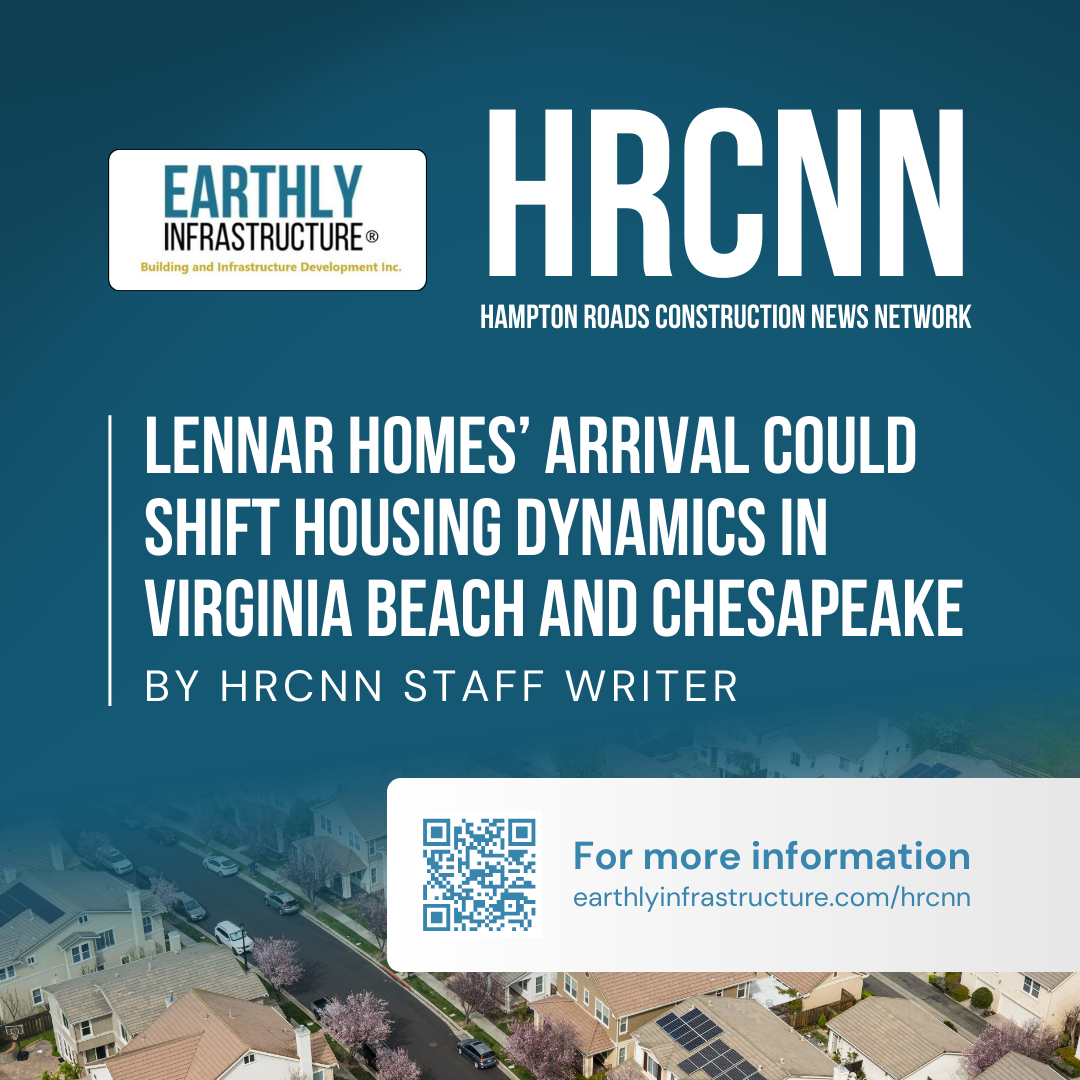By Eric S. Cavallo, Editor-in-Chief, HRCNN
Hampton Roads entered 2025 with expectations tempered by years of deferred projects, uneven investment cycles, and a regional economy often caught between aspiration and reality. Yet by the close of the year, the region presented a very different landscape—one marked by active construction, visible reinvestment, and a newfound alignment among its major cities. Virginia Beach, Norfolk, and Portsmouth each advanced projects of unusual scale and consequence, signaling that the region had moved past hesitancy and into a period of genuine economic confidence. The result was not a series of isolated developments but a portrait of a metropolitan area rediscovering its momentum.
Nowhere was this more apparent than at the Virginia Beach Oceanfront, where the long-anticipated Atlantic Park project finally moved decisively into construction. For years, the former Dome site stood as both a reminder of missed opportunity and a symbol of the city’s desire to create a modern entertainment district. That changed through the partnership between Venture Realty Group, the Virginia Beach Development Authority, Mayor Bobby Dyer, and key city leaders including Deputy City Manager Taylor Adams, who helped steer negotiations to final approval. The City of Virginia Beach committed more than $150 million toward the public backbone of the district: approximately $9.2 million for land acquisition and site preparation, $55 million for a new 3,500-seat entertainment venue, nearly $46 million for structured parking, about $36.6 million for off-site infrastructure, and an additional $6 million for streetscape improvements. Private capital is funding the remainder of a mixed-use program expected to total between $325 million and $350 million when fully built out. As 2025 progressed, foundations were poured, structural steel rose, and the once-vacant site transformed into a promising multi-venue district designed to reposition the Oceanfront as a year-round destination.
A few miles west, another Virginia Beach landmark continued its own transformation. The redevelopment of the former Pembroke Mall into Pembroke Square advanced throughout 2025 under the direction of Pembroke Realty Group and its president, Ramsay Smith. The $200 million plan represents one of the region’s most ambitious examples of adaptive reuse, replacing an aging enclosed mall with a walkable, integrated district of multifamily housing, senior living, hotel development, retail, dining, and entertainment. The city’s participation—particularly through public parking infrastructure—helped enable higher density and a more contemporary urban form. Aviva Pembroke, the senior living component, opened its doors; the Beamers residential building continued to stabilize with strong demand; and construction began on a seven-story Tempo by Hilton hotel, set to deliver in 2027. What emerged in 2025 was not merely the reinvention of a single parcel but a demonstration of how older commercial corridors can evolve into resilient, mixed-use urban centers capable of driving sustained economic activity.
Across the Elizabeth River in Norfolk, progress accelerated on a project of even greater scale. The Norfolk Casino Resort—led by the Pamunkey Indian Tribe in partnership with Boyd Gaming—advanced a $750 million entertainment and hospitality complex designed to reshape the city’s riverfront. Supported by Mayor Kenny Alexander and successive City Council actions, the resort is planned to include a hotel tower, gaming floor, dining and retail options, meeting and convention space, and direct integration with the waterfront. For decades, the land adjacent to Harbor Park remained underutilized despite its strategic location along transit, riverfront access, and the city’s sports district. In 2025, pile driving, site preparation, and foundation systems signaled that Norfolk had moved beyond conceptual renderings into tangible execution. The opening of a temporary casino later in the year provided further evidence that the long-term resort is not just aspirational but underway, with the potential to anchor a new era of downtown revitalization and tourism-oriented development.
Portsmouth, too, marked 2025 as a turning point. With the success of Rivers Casino Portsmouth already established, city leadership—including Mayor Shannon Glover, the City Manager’s Office, and partners at Rush Street Gaming—advanced The Landing Hotel, an eight-story, $65 million lodging development directly connected to the casino. Designed to include 106 guest rooms, 32 suites, and high-end amenities such as executive meeting spaces, upscale hospitality offerings, and indoor access to the casino’s entertainment and dining venues, The Landing stands to become one of the most consequential hospitality investments in Portsmouth’s modern history. Groundbreaking activity, early-stage structural work, and contractor mobilization reflected a project that had moved definitively from planning to execution. In a city constrained by its limited taxable land base—where federal and military holdings dominate large acreage—privately funded investments of this magnitude carry an outsized impact. The Landing is expected to generate hundreds of construction jobs, dozens of permanent hospitality positions, and sustained revenue streams that strengthen the city’s fiscal position.
Taken together, the progress made in 2025 represents more than concurrent construction activity. It reflects a strategic reorientation in how Hampton Roads cities evaluate, pursue, and execute large-scale development. Each project differs in purpose and design: Atlantic Park modernizes the region’s tourism identity; Pembroke Square demonstrates the power of urban reinvention; Norfolk’s casino resort reclaims underused waterfront; and The Landing elevates Portsmouth’s hospitality and entertainment capacity. Yet in their differences, they reveal a shared regional trajectory. Local governments made difficult but forward-looking financial commitments. Developers invested capital at a scale that signals faith in the metropolitan economy. And planners, architects, and contractors worked in alignment to bring long-discussed ideas into physical form.
As 2026 approaches, the question confronting Hampton Roads is no longer whether the region can attract major development, but how effectively it can integrate these investments into a cohesive, resilient, and prosperous future. The groundwork laid in 2025 suggests a region capable not only of competing with its peers but of defining itself through bold, coordinated action. With major projects rising in three core cities, Hampton Roads enters the next year not with speculation but with momentum—and with a construction landscape that stands as visible proof of its renewed confidence.
About HRCNN
The Hampton Roads Construction News Network provides independent, industry-focused reporting on infrastructure, development, zoning, and the built environment across southeastern Virginia. Our mission is to inform public understanding, elevate professional insight, and chronicle the projects that shape the region’s economic and civic future. Through analytical coverage and clear editorial standards, HRCNN documents not only what is being built, but why it matters—and how it defines the communities we call home.

